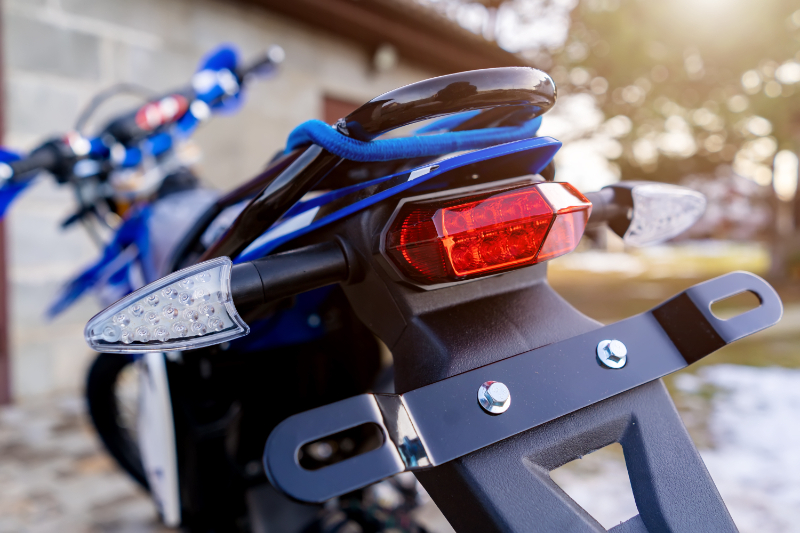Learn how 'Common Motorcycle Fault Codes' can help detect problems early! Our guide explains how to understand ECU & diagnostics to maintain your bike's health.
How to Read Motorcycle Fault Codes
Modern motorcycles use onboard diagnostics to identify faults. The engine control unit (ECU) stores error codes, which can be accessed through a diagnostic port or the dashboard. Many bikes display a check engine light when an issue is detected. To retrieve fault codes, you may need to enter diagnostic mode using a combination of buttons on the instrument panel or connect a diagnostic tool.
Once displayed, these codes correspond to specific faults in the engine, electrical system, or braking system. Some manufacturers provide a reference guide in the service manual, while others require a scan tool. Understanding how to read these codes helps pinpoint issues quickly and avoid unnecessary repairs.
Understanding the ECU and Diagnostic Systems
The ECU is a vital component of modern motorcycles, acting as the central processing unit for various systems. It collects data from sensors across the bike and makes real-time adjustments to ensure optimal performance. This includes managing fuel injection, ignition timing, and emissions control. When a fault is detected, the ECU records an error code to help diagnose the issue.
Many modern motorcycles are equipped with an onboard diagnostic system (OBD), similar to those used in cars. Some models use a standard OBD-II port, while others require manufacturer-specific diagnostic tools. These systems make it easier for technicians and riders to identify issues without the need for a full mechanical inspection. Regularly checking for fault codes can help detect minor problems before they develop into serious mechanical failures, ensuring the motorcycle remains in good working order.

As technology has advanced, ECUs have become increasingly complex, offering more precise control over motorcycle performance. They now manage functions such as traction control, throttle response, and even rider modes, allowing for adjustments in power delivery based on riding conditions.
Some high-end motorcycles include cloud-based diagnostic systems that enable remote troubleshooting and software updates. While these advancements improve performance and reliability, they also mean that diagnosing faults often requires specialised knowledge and tools.
In some cases, a minor ECU-related issue may trigger a warning light even when the motorcycle is still running smoothly, making it crucial for riders to understand which faults require immediate attention and which may be minor electronic glitches.
Common Engine-Related Fault Codes
Engine-related fault codes typically indicate issues with fuel injection, ignition, or airflow management. One common fault is related to the mass airflow sensor, which affects the fuel-air mixture. If this sensor fails, the engine may run inefficiently, leading to poor performance. Faults in the fuel injector circuit can also occur, causing the engine to misfire or idle roughly. These problems can result in higher fuel consumption and reduced power output.
Other common engine-related faults include misfire detection, which is often caused by faulty spark plugs or ignition coils. A malfunctioning coolant temperature sensor can lead to overheating, while an oxygen sensor failure can impact fuel efficiency. Addressing these faults promptly can prevent more serious damage to the engine and improve the motorcycle’s overall performance.
Electrical System Fault Codes and Their Meaning
The electrical system in a motorcycle is responsible for powering essential components such as the ignition, lights, and sensors. Fault codes related to the electrical system often indicate problems with the battery, alternator, or wiring connections.
A low battery voltage error, for example, may signal an issue with the charging system or a failing alternator. If the speed sensor malfunctions, the speedometer may display incorrect readings, affecting the rider’s ability to gauge their speed accurately.
Another common electrical fault involves a loss of communication between the ECU and other control units, which can be caused by damaged wiring or a faulty connector. Ignition switch failures are also common and may prevent the motorcycle from starting. Electrical system issues can sometimes be intermittent, making them challenging to diagnose, but regular maintenance and checking battery health can help prevent unexpected breakdowns.

With modern motorcycles relying heavily on electronic systems, even a minor wiring fault can lead to major performance issues. Many manufacturers now integrate advanced diagnostics into their bikes, allowing users to check for electrical problems via mobile apps or dedicated service tools.
This increased reliance on electronics also means that exposure to water, vibration, or corrosion can cause electrical failures. Loose or damaged connections, particularly in older motorcycles, are a leading cause of intermittent electrical issues.
ABS and Braking System Fault Codes
Anti-lock braking systems (ABS) have become standard on many modern motorcycles, improving safety by preventing wheel lock-ups during braking. Fault codes related to the ABS typically indicate problems with wheel speed sensors, brake fluid pressure sensors, or the ABS pump. If the front or rear wheel speed sensor fails, the ABS system may become disabled, increasing the risk of skidding during hard braking. A malfunction in the ABS pump can lead to reduced braking effectiveness, making it more difficult to control the motorcycle in emergency situations.
Brake fluid pressure sensor faults may cause inconsistent braking response, affecting rider confidence and safety. If an ABS warning light appears on the dashboard, it is essential to inspect the braking system, check for sensor issues, and ensure the brake fluid is at the correct level. Ignoring these faults can compromise braking performance and increase the risk of accidents.
Jap & German Motorcycles provides the best BMW motorcycle services in and around West London. Whatever you require, our team can assist you with everything from BMW motorbike repairs to providing motorbike spare parts.

